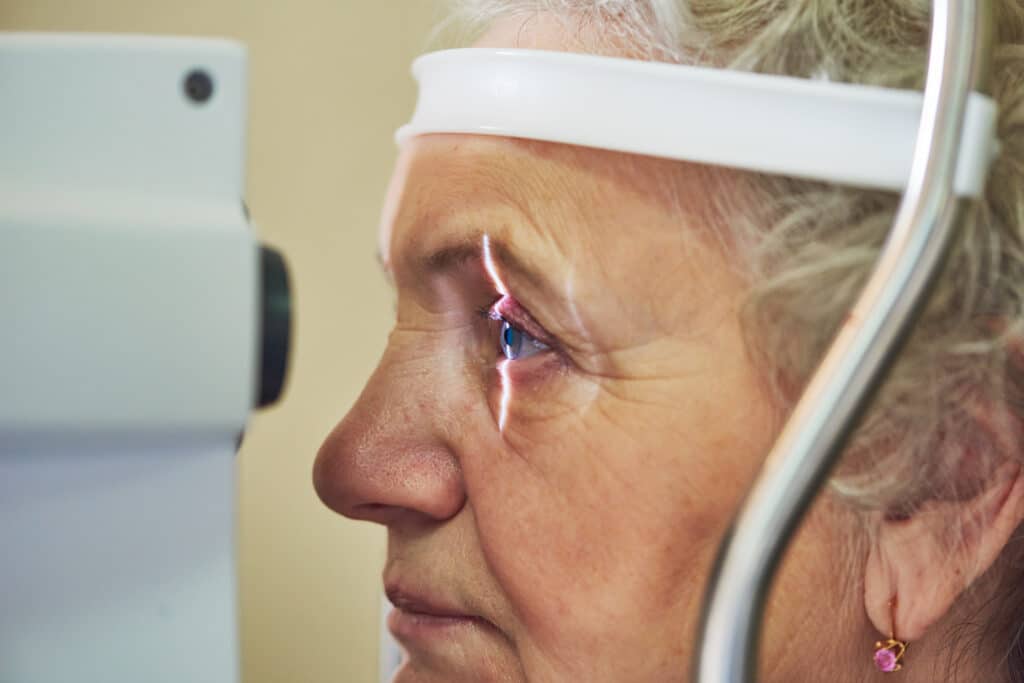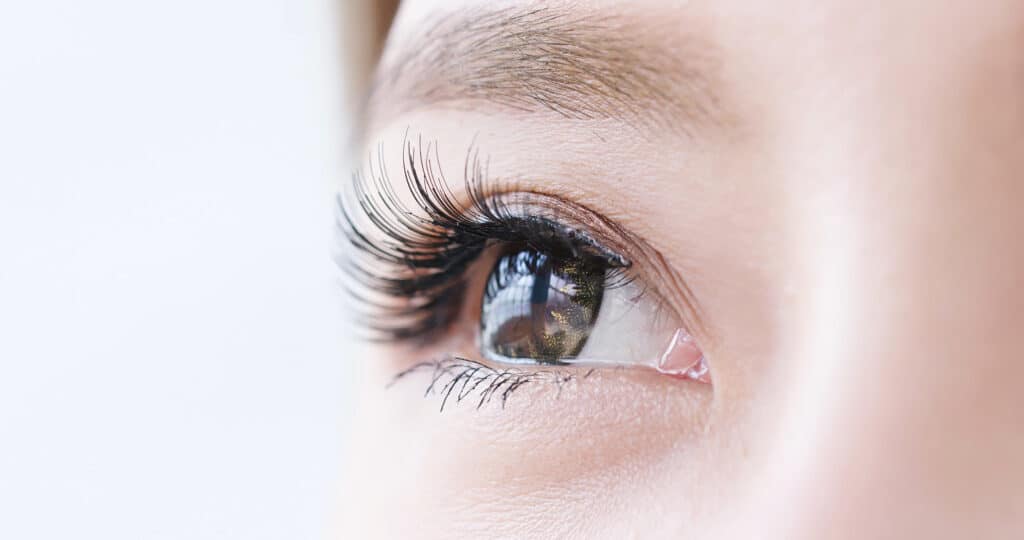Different Eye Allergies and Their Treatments
September 3, 2021
What Are Eye Allergies?
You often hear talk of seasonal allergies as the seasons change, but did you know that the same irritants that cause seasonal allergies can also cause eye allergies? Eye allergy symptoms can be present on their own, but often are accompanied by sneezing, congestion, and other symptoms of seasonal allergies.
Eye allergies can cause eye redness, itching, irritation, and discharge. This occurs when irritants known as allergens interact with your eye, causing your eye to release histamine and other substances. This response by your immune system increases tear production and secretion, causes dilation of blood vessels, and irritated nerve endings.
Eye allergies are also known as allergic conjunctivitis because they cause inflammation of the conjunctiva (the membrane covering the whites of your eyes). They are fairly common and affect about one in five people.

Symptoms of Eye Allergies
Symptoms of allergic conjunctivitis may include:
- Itchiness
- Eye redness
- Excessive teariness
- Soreness and pain
- Foreign object sensation
It’s not unusual to also experience symptoms of seasonal allergies, such as runny nose, sneezing, and congestion. Symptoms are usually worse in warm, dry weather and tend to be less severe in cool, wet environments.
Contact allergic conjunctivitis is another form of immune response in the eye that occurs when the eye is irritated by contact lenses or proteins in tears that irritate the surface of the eye. It causes redness, itching, discharge, and discomfort.
Giant papillary conjunctivitis is a more serious form of contact allergic conjunctivitis occurring when the conjunctiva is repeatedly irritated by contacts or other foreign objects. Giant papillary conjunctivitis causes papules, or fluid filled sacs, to occur on the inside of your eyelid.
Symptoms of giant papillary conjunctivitis may include puffiness, itching, redness, increased tear production, and eye discharge, as well as feeling like a foreign body is in your eye; contact lens use should be avoided during this time.
The Path to Clearer Vision Starts Here
Seasonal and perennial allergic conjunctivitis are acute syndromes occurring only during certain times of the year. On the other hand, vernal keratoconjunctivitis is a chronic allergic eye disease, primarily affecting young males and people with medical or family history of asthma, eczema, rhinitis, or other atopic diseases.
As many as 50 to 75% of patients with vernal keratoconjunctivitis also have asthma or eczema. It is often accompanied by symptoms of irritation and itching, sensitivity to light (photophobia), watery eyes, redness, and burning.
How to Treat Eye Allergies
Symptoms of eye allergies can have a serious impact on your quality of life, often causing affected individuals to avoid going outdoors, driving, reading, and other day-to-day activities.
The best way to treat eye allergies is by limiting exposure to the allergens that irritate your eye.
Some of the most common allergens and causes of eye allergies include the following:
- Pollen from trees, grass, and weeds
- Pet dander
- Perfumes, cosmetic products and facial creams
- Smoke and air pollution
- Contact lens use
If you are sensitive to pollen, you should limit time spent outdoors when pollen counts are high, especially in windy weather that may blow pollen into your eyes. Keep windows closed and have your air conditioning running to mitigate pollen exposure.
You may consider using a dehumidifier in your home as well, because high amounts of humidity can cause mold to grow which may irritate your eyes.
While prevention is key for long term care, at times allergens can be unavoidable and you will need to treat symptoms as they arise.

Methods for treating symptoms:
- Use artificial tears to rinse away allergens
- Anti-inflammatory eye drops
- Anti-histamine eye drops
- Steroid medications
- A cold compress and artificial tears can alleviate symptoms in mild cases of allergic conjunctivitis
- Reduce contact lens use and remove lenses when symptoms are present
- Avoid rubbing your eyes when itchy as it will only worsen the irritation and redness.
Artificial tears can temporarily relieve irritated eyes by providing moisture and washing allergens out from the eye. These can be found over-the-counter.
Anti-inflammatory eye drops are another non-prescription treatment for eye allergies. These will lower the inflammation in a general way and are effective for mild allergies. These types of eye drops should not be used for more than a few days at a time or they may make symptoms worse.
Steroid medications are sometimes required to alleviate severe allergies. These can be administered topically, orally, intranasally, and by injection. All steroid medications reduce generalized inflammation and are effective at controlling swelling, itching in the eyes, nose, throat or other affected areas. When used chronically, steroid medications can have some negative side effects and are best for short term use only and only with doctor supervision. Negative side effects in the eye can include increasing the eye pressure and accelerating cataract formation.
The Path to Clearer Vision Starts Here
Antihistamine eye drops are more specific for eye allergies and are more effective at reducing itching and swelling. Antihistamines block histamines from binding to histamine receptors, thereby allowing your body to break the histamines down without the immune response. Antihistamine eye drops are available by prescription and over-the-counter, They can be used for more severe and chronic allergies.
Mast cell stabilizers work on the mast cells in your eyes that have antibodies on them with which the allergens react. Mast cell stabilizers prevent the release of histamine and therefore reduce the overall immune response and amount of eye inflammation. They sometimes take a while to work and may be used in conjunction with antihistamines in order to relieve symptoms. Mast cell stabilizers are prescribed by a licensed medical professional and taken orally or inhaled.
Your doctor may provide you with prescription treatments for your eye allergy symptoms.
Prescription options may include:
- Eyedrops (anti-inflammatory, anti-histamine, artificial tears, steroid etc.)
- Allergy shots
- Oral antihistamine, mast cell stabilizer, steroid medication
Overview
As you can see, there are many different ways to treat eye allergies, and the different available treatments operate by various different mechanisms.
There is no need to feel overwhelmed by all the treatment options, because at Heart of Texas Eye Institute, our team of eye specialists has the training and experience needed to find what is right for your eye allergy symptoms.
Contact us today to make an appointment!
Take The Next Step
Would you like to learn more about [treatment name] and take the first step toward a clearer future? Then please fill out our online form or call us at (512) 213-2220 to get started with an in-person consultation at Heart of Texas Eye Care. Our courteous staff and board-certified ophthalmologists are here to assist you through every step of your journey!


